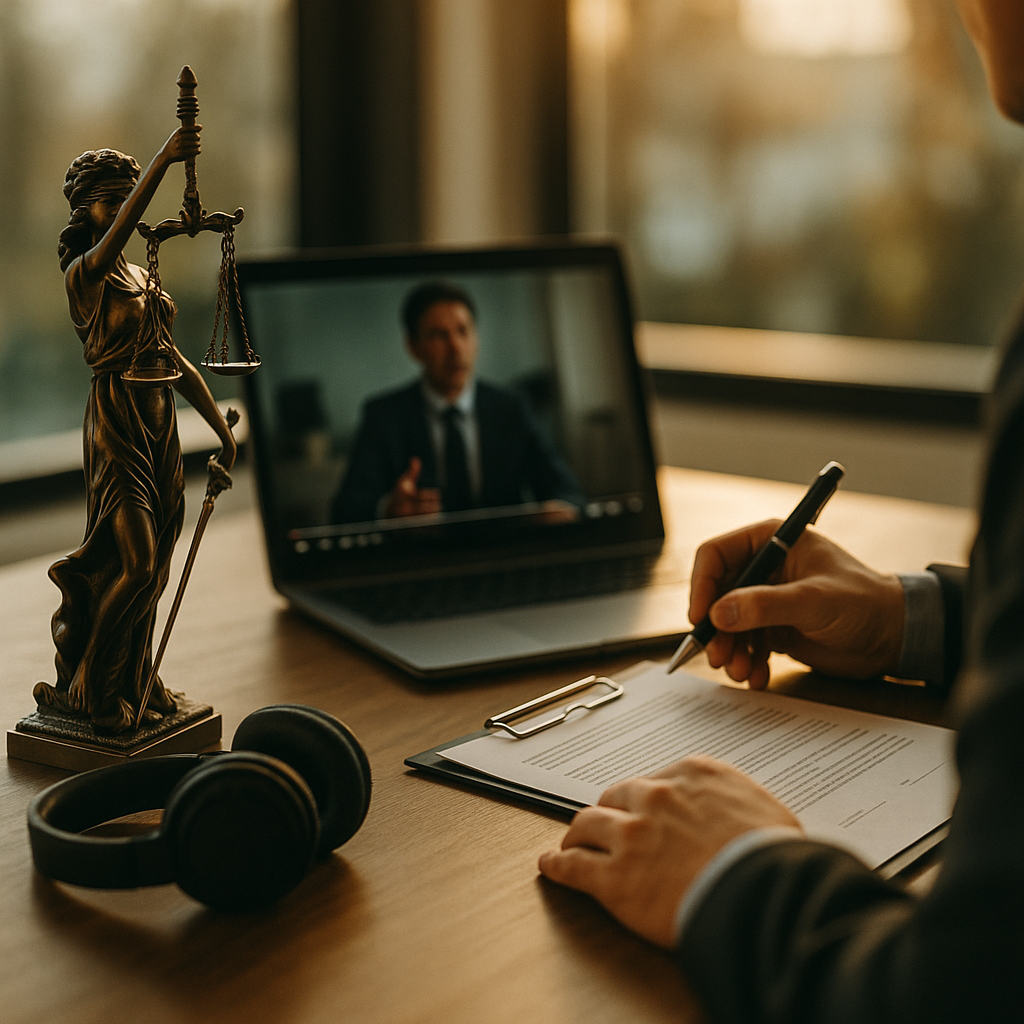Music licensing for corporate videos and internal communications is a crucial step in ensuring your brand’s audio-visual content is legal, professional, and impactful. With the right licensing approach, you can avoid costly pitfalls and harness music’s emotional power in your messaging. Dive in to discover best practices and essential options for integrating music safely and smartly in your business content.
The Importance of Legal Music for Corporate Videos
Securing legal music for corporate videos is more than a formality; it’s a fundamental part of risk management and brand integrity. Using unlicensed tracks can lead to copyright claims, take-down notices, or even lawsuits, disrupting business operations and damaging your reputation. Platforms like YouTube and LinkedIn also automatically scan for unauthorized music, potentially muting your content or blocking uploads, which puts your investment in video production at risk. According to the World Intellectual Property Organization, businesses lose millions each year due to IP infringement penalties. Prioritizing legal music ensures your content remains visible and trusted by audiences and platforms alike.
Types of Music Licenses for Internal Communications
The landscape of music licensing for internal communications can seem complex, but understanding the main license types simplifies decision-making:
- Royalty-Free Music: A one-time fee grants the rights to use a track multiple times without additional payments. It’s ideal for training videos, presentations, and employee onboarding content.
- Rights-Managed Music: Licenses are customized based on usage, audience size, and distribution. This option offers exclusivity or high-end production value for key corporate events or campaigns.
- Creative Commons Music: Some artists allow free use of their music with specific conditions, such as attribution or non-commercial usage—helpful for internal-only projects.
- Custom Compositions: Commissioning unique music avoids licensing complications and creates content that is fully aligned with your brand voice.
By matching the license type to your project’s needs, you minimize risk while maximizing impact and compliance.
How to Source Licensed Music for Corporate Use
Finding music for corporate videos and communications is easier than ever, thanks to dedicated licensing platforms in 2025. Industry leaders like Audio Network, Epidemic Sound, and PremiumBeat offer vast libraries with clear licensing terms tailored to business needs. These platforms often provide:
- Simple search tools to find tracks by mood, tempo, or genre
- Instant, transparent licensing agreements suitable for commercial or internal use
- Bulk licensing options for multiple videos or departments
- Direct support channels for guidance on the best license for your content
Additionally, many businesses create internal guidelines or preferred vendor lists. These streamline music selection and ensure each piece of content meets regulatory and brand compliance requirements. Collaborating with legal counsel or a music supervisor can further safeguard your organization against infringement risks.
Best Practices for Music Licensing Compliance
To maintain music licensing compliance in your corporate workflows, implement these reliable strategies:
- Centralize Documentation: Keep license certificates and receipts organized in a centralized digital repository for fast reference during legal audits or platform challenges.
- Regular Staff Training: Educate content creators, marketers, and event organizers about the importance of using licensed music and the company’s approved sourcing channels.
- Periodic Audits: Review video libraries and internal communications for music compliance to identify and update any legacy content with unlicensed music.
- Consistent Attribution: If required by the music’s license, ensure proper credits are always included in your content—especially with Creative Commons tracks.
Embedding these habits reduces legal exposure and supports a culture of respect for intellectual property across your organization.
Maximizing the Impact of Music in Corporate Content
Beyond compliance, the right music drives audience engagement and reinforces core messages. Music selection should complement—not overpower—visuals and dialogue. For internal training videos, upbeat or motivational tracks can foster learning retention and positivity. For CEO messages or product launches, cinematic or inspirational scores convey gravitas and vision. Remember to:
- Align music with brand values and the intended emotional response
- Use instrumental versions to avoid competing with voiceovers
- Test multiple tracks with target audiences, if possible, to measure effectiveness
Incorporating licensed music thoughtfully amplifies your story and demonstrates professionalism, both internally and externally.
Understanding Global Considerations in Music Licensing
If your business operates in multiple countries, be aware that music licensing laws and collective management systems vary by territory. A license valid in one region may not cover global broadcasts or employee communications. Modern licensing platforms increasingly offer global coverage or guidance on where additional rights may be needed. Engage with partners who understand international music rights to avoid accidental infringements as your business content crosses borders.
Securing the right music licensing for corporate videos and internal communications isn’t just about compliance—it’s a strategic tool for brand expression and audience impact. By following best practices and leveraging professional resources, you can communicate with confidence, creativity, and legal peace of mind.
FAQs on Music Licensing for Corporate Videos and Internal Communications
- Do I need a license for background music in internal-only videos?
Yes. Even for content not shared externally, you must secure the appropriate license to avoid infringing the music’s copyright. - Can I use Spotify or Apple Music tracks in business presentations?
No. These platforms are for personal use; corporate or public sharing requires a separate commercial license. - What happens if I use unlicensed music in a corporate video?
You risk content removal, legal action, fines, and damage to your professional reputation. - How much does music licensing for corporate use cost?
Costs vary: royalty-free tracks may start at $20–$100, while custom compositions or rights-managed music can range into thousands depending on use and exclusivity. - Is Creative Commons music safe for internal communications?
It can be, but review the specific license to ensure it allows commercial or business use, and always provide attribution if required.
